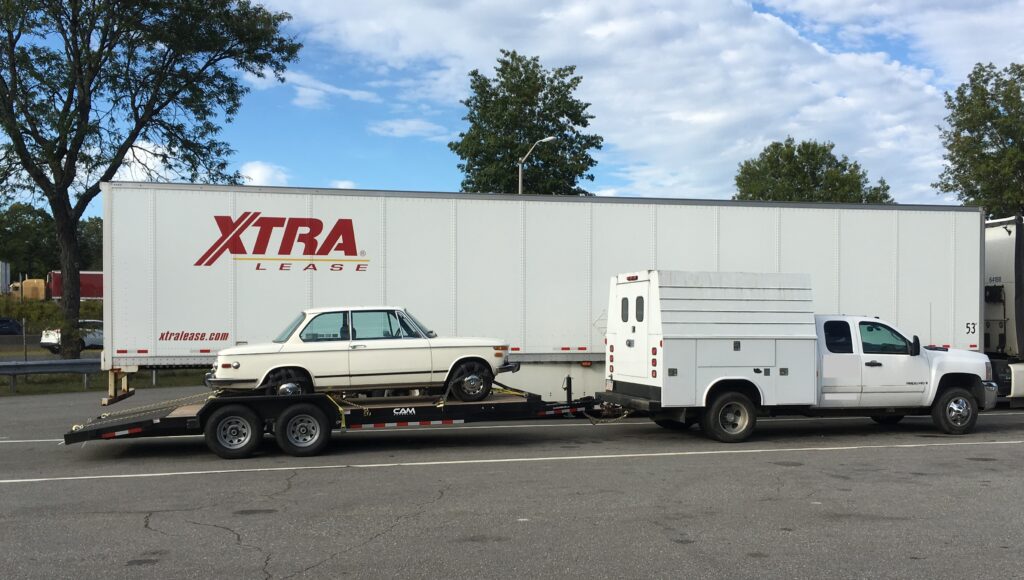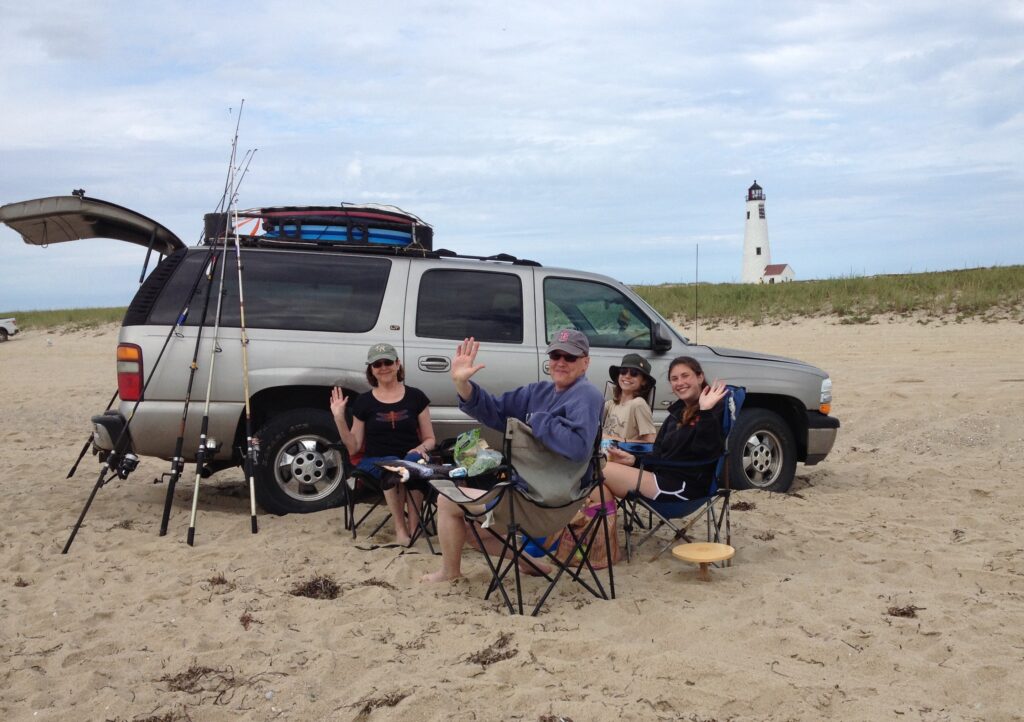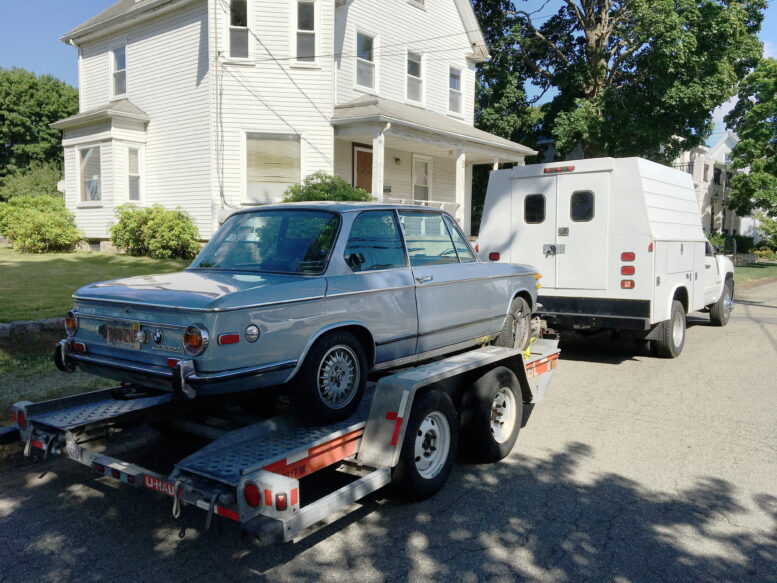Thanks, folks, for the comments on last week’s piece and sharing your love of the E46. I haven’t made any decisions, partially because another issue has been preoccupying me.
I wrote several pieces over the last few years about my truck, the 2008 Chevy Silverado 3500HD dually Duramax diesel with the utility body in place of the bed. It had been my former work vehicle when I was still doing field geophysics (I used to drive it to work sites towing a 32-foot trailer), but that work largely sunset around 2014, and the truck basically sat in the parking lot of our building in Woburn, Massachusetts. Due to zoning issues, we wound up having to park it a few miles away. As an unofficial quid pro quo, I kept the truck inspected, registered, and performed inspections for them even after I was no longer an employee. In return, I got to use it for occasional errands, including moving my kids in and out of college, and towing cars. It was the use of the truck that made the whole episode with buying Hampton, the 49,000-mile ’73 2002 on Long Island, possible.

The borrowed truck, towing home Hampton in 2019.
About three years ago, my former employer closed the building where I used to work and liquidated the contents. Because the truck was parked elsewhere, it was spared the axe. To the division of the company I used to work for, the monthly parking fee was the only real reminder of the truck’s existence. I was the only one left (and “left” is a funny word, as I’d technically “left” the company in 2015 and was a consulting employee whose work had long ago trended down to zero) who really understood how special the truck was—that it was a heavy-duty diesel tow vehicle that only had 29,000 miles on it. Unfortunately, mice had gotten into it, infesting the heater box and the headliner and making it smell like a two-month-old crime scene that had never been cleaned up. I made them a ridiculously low offer on it (like worn-out-E39-540i-needing-valve guides-money ridiculously low). It took them a few months, but they accepted it.
So, in the spring of 2021, I became the owner of a very powerful, very large, very smelly work truck, which, in this column, I referred to as the “Bad Mouse Warehouse.” (Get it? No? Never mind.) In these two articles (part 1 and part 2), I detailed addressing the mouse contamination issues. It was a lot of work, but cost very little money. After that, and outfitting the truck with new Michelins, I had a vehicle that could not only tow a car, it could tow one of those multi-level transports. I thought that a new chapter in my Hack Mechanic life was going to open, where I bagged and dragged home new project cars every month. Or, if not home, into storage; I may complain about my rented storage in Monson MA, but because it’s warehouse storage as opposed to individual roll-up bays, the space doesn’t have the problem of “I’d buy it if I had somewhere to put it”—I can always tell the landlord I want to rent another space inside.
Surprisingly, the swaggering incarnation of “Rob Siegel: Slayer and Tow-er of Cars” never happened. During the two-and-a-half years I owned the truck, I never once used it to snag a car. Don’t get me wrong—it was an incredibly useful vehicle to have in the driveway. It was handy when I had to begin moving the stored cars from Fitchburg to Monson in the winter. I used it a few times to tow friends cars, including “the mitzvah 2002tii” pictured in the first photo. And it was a godsend when my sister and I were preparing to sell our mother’s house; it seemed like every other day I was over there with the truck, moving stuff like the numbers-matching engine from my E9, or ferrying furniture over to my niece’s houses.
But it was a silly vehicle for me to own, an absolutely ridiculous amount of overkill if all I was going to use it for was running boxes down to the local recycle depot. And it wasn’t something I enjoyed driving, as the combination of the lack of visibility from the utility body and the horrible turning radius made the truck challenging to park in tight parking lots. Due to the truck being a pre-Diesel Emission Fluid (DEF) Duramax diesel with only 29,000 miles, it was worth a lot of money, especially now that it didn’t smell like a slaughterhouse. All-in (purchase, taxes, tires, replacing the stolen catalytic converter), I had maybe six grand in it. I put it up for sale both locally and on eBay with a high asking price, a local guy who owns a gravel and cement company offered me thirty grand, and I took it.

“Hello, central casting, could you send over someone to play the part of the buyer of my truck, someone who looks like they own a cement and gravel company in Gloucester?” (Kidding aside, he was a great guy and the truck went to a great home.)
Stepping back from the specifics of the sale for a moment, the “business model” under which I work is that I don’t make much money as a self-employed writer, so every once in a while I need to sell a car that’s dear to me to re-inflate the family finances back into the black. Selling the truck—which, again, during the time I owned, I never used to buy a dead car and tow it home—was a rare chance for me to make actual windfall money on a vehicle, something that almost never happens to me. So I don’t regret selling it for an instant.
However, suddenly being not only without this particular truck but without instant or rapid access to a towing vehicle created a void in both my style and my self-image, so it wasn’t long before I began looking for something to replace it with. And that’s been far more difficult than I would’ve expected. It took me a while to figure out why.
Long-time readers know that I’ve owned a series of Chevy Suburbans. I bought them during the three decades I took my family on vacation to Nantucket, where a large four-wheel drive vehicle was needed to take extended family and friends and boogie boards and windsurfers and coolers and Coleman grills out on soft sand to the prime fishing spots on the sandy necks of Great Point and Smith Point. I’d typically buy a cheap high-mileage ‘Burb in the spring, give it whatever repairs were needed for it to survive the vacation, and sell it sometime in the fall. Why not keep it year-round, you ask? Well, because insurance was expensive, and because neither Maire Anne nor I wanted to be daily-driving something this big.

One of many ” ‘Burb on the beach” shots over the decades.
It was while I owned the ‘Burbs that my new garage finally got built, and the combination of those two things turbocharged my habit of buying dead cars. It also started me looking at cars that were further from home. The dynamic here is that that if an interesting car is only 50 miles away, you can jump in your daily driver, go have a look at it, decide if you want to buy it, and come back later and get it, but if a car is three or four hours away, it’s so much more efficient if you just make the trip once. Plus, if you go and look at a car with a truck and a rented U-Haul auto transporter, the car can be bought and towed home in a single trip with a single person rather than roping your spouse into coming to look at a car with you so, if you bought it, you could drive it home, which in my state, isn’t legal anyway. (Even though slapping plates from another car onto one you’ve just bought is a common practice, the circumstances where you can legally do so in Massachusetts and have insurance coverage from the plate is so narrow as to be impossible under practical circumstances.)

Bagging and dragging the Bav with the ‘Burb in 2014.
I had the Suburbans for nearly 30 years. When I sold the last one in 2016, I had borrowed access to the work truck, so that capability didn’t go away. Then I owned the work truck outright. The whole lone-wolf hunting and killing and dragging home cars thing became a surprising part of my self-image. It didn’t matter that I didn’t do it often. It didn’t matter that it was never as easy as I make it sound because U-Haul auto transporters frequently aren’t available when you need them, or that renting and returning one sometimes adds nearly a full day onto the trip. Those are details. The big picture was that having the truck enabled the possibility of dropping everything and snagging something, and that’s always an exciting possibility. When I sold it, I knew logically that I was giving this up, and reasoned that it didn’t matter because I hadn’t been taking advantage of it anyway. I didn’t expect it to hit the right side of my brain—the emotional side—so deeply.
The question of what to replace the truck with has been surprisingly prickly. I realized that I’d never really decided to buy a tow vehicle and then shopped for one—the towing capability came along for the ride when I began buying the Suburbans, which I used not for towing but for their ability to carry people and stuff on soft sand.
If I wanted to replace the Silverado with another super-duty low-mileage diesel dually, I wouldn’t have sold it in the first place. I certainly wasn’t going to spend 30 grand to buy one like it, and the odds of finding another one for windfall-cheap money were zero. On the first go-round, I thought I’d do what I’d done before and simply buy another Suburban. But then I remembered that in 2019 I’d been down this road before (that neither Maire Anne nor I wanted to daily-drive a big-ass ‘Burb), decided to try a BMW X5, and wound up with the triple-unicorn 2004 X5 with the six-speed stick, the sport package, and the tow package. Somewhat surprisingly, I didn’t like it—it always felt too big for me as a daily. And I never used it to tow. I was relieved when I sold it in 2020 and went back to daily-driving my E39 530i stick sport.

The triple unicorn X5 worked better for me on paper than in the real world.
So I thought I’d try something new. I got interested in Honda Ridgelines, as they’re unibody vehicles (they share the chassis with the Odyssey minivan and the Pilot SUV) instead of body-on-frame trucks. I posted this on Facebook, and opinions were split. “It’s not a real truck. It only has a 5,000-pound towing capacity. The V6 will have you doing 40 up hills and you’ll cook the transmission” said some friends. “It’ll be fine for the 100-mile towing of 2,500-pound cars you do” said others.
Ultimately, what swung me away from the Ridgeline had nothing to do with the Ridgeline itself—it was the fact that I’m simply not a truck guy. I don’t move dirt or gravel or hay, or get rid of construction debris, or buy 4×8 panels of sheetrock or plywood, or do other things that require a pickup truck.
So what are my requirements? Well, I need to occasionally tow small to medium-sized vehicles (and that’s all I need to tow—I don’t see myself towing a big travel trailer that requires a vehicle with a real “towing package” with shorter gearing and an integrated brake controller), and to occasionally carry, well, stuff. If you’re towing, you need a certain amount of stance and wheelbase and weight and power, and the main two ways to get that are either with a truck or an SUV. Given the choice, I decided that it made more sense to tip toward the SUV side. So any mid-size SUV with 6,000 pound tow capacity should be plenty. That does include X5s, but even if I wanted to try another one, surprisingly few of the ones I see on Facebook Marketplace have a trailer hitch and electric socket.
Oh, and it needs to be what I call “whim-able” money, meaning in the $4,000 to $5,000 range. This sounds ungodly restrictive for anything that’s not a piece of junk, and maybe it is, but it’s the top end of I was used to paying for the vacation Suburbans.
These days, I’m not quite as shy as I used to be about having multiple vehicles insured simultaneously. Hell, for a while, I had Maire Anne’s daily Honda Fit, my E39, the little Winnebago Rialta RV, and the truck all insured as regular drivers, though the RV usually comes off the road over the winter. I still have it registered, as it’s currently the only large vehicle I own, but for a 21-foot-long vehicle, its stuff-hauling capability is surprisingly limited. With its fuel-efficient but anemic five-cylinder 110-horsepower Audi engine, it certainly can’t tow anything. And despite the RV’s 21-foot length and full-size bed, it doesn’t have a rear hatch, so all cargo has to come in through the 27-inch-wide side door, meaning that it’s useful for thin or bendable stuff or big stuff you can take apart, but for an engine or a refrigerator, forget about it.

The Rialta got unexpectedly pressed into service to buy a queen-sized bed for my son Ethan.
I began to think about things a different way. While I’m not going to twist Maire Anne’s arm into daily-driving something she doesn’t want to, I thought that if we have a decent medium-sized SUV that I can occasionally tow with in the driveway, something with all-wheel drive when we need it (her Honda Fit is front-wheel drive; my E39 rear-wheel drive), she’ll be more likely to use it in the winter than if it’s a full-sized Suburban or a pickup. So, I began looking at Toyota Sequoias, specifically the 2005 to 2007s, as these received a 40-horsepower bump over the earlier models but aren’t the near-Suburban-sized vehicles that they morphed into in 2008. Unfortunately, these have the same frame rot issues as the Tundra pickups, so the ones in New England have either had the frame replaced years back under warranty, or have been privately repaired, or are rotted junk. I’ve yet to see an ad for a Sequoia in my price range that’s made me want to drive and see it (and since I don’t have a tow vehicle to haul the tow vehicle home with, I really don’t want to be taking a lot of trips where I drive for hours, crouch under the car, look at the frame, then walk away muttering “well that was a complete waste of time”).
I’ve alternated Sequoia searching with looking at late 2000s Nissan Armadas and Pathfinders, as these seem to satisfy my towing and space requirements without “the Toyota tax,” but they appear to have rear subframe and rear trailing arm rot issues. There are also troubling reports of, in the years leading up to 2008, premature transmission failure due to coolant from the radiator intermixing with the transmission fluid, and odd braking issues.
So, no replacement tow vehicle yet. You’ll know when I’ve bought something when I write about buying an E46 and towing it home :^)
—Rob Siegel
____________________________________
Rob’s newest book, The Best of The Hack Mechanic, is available here on Amazon, as are his seven other books. Signed copies can be ordered directly from Rob here.





















